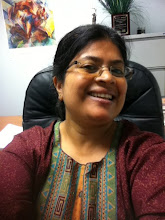“Text messages save lives” announces a large red banner on the face page of the website for FrontlineSMS:Medic. True indeed!
The whole project began in the summer of 2008, when Josh Nesbit, a senior in the Human Biology program at Stanford University, with a concentration on International Health and Bioethics, traveled to St. Gabriel’s Hospital in rural Malawi. St. Gabriel’s serves a population of about 250,000 Malawians spread over an area 100 miles in radius. The poorest of the patients have to walk up to 100 miles to get to the hospital; while those with more resources can ride bicycles or oxcarts. Thus, as can be expected, people only come to the hospital when they must. In order to address concerns of peoples’ accessibility to the hospital, St. Gabriel’s has been using an approach that is becoming increasingly popular in similar clinics around the world. The hospital trains and employs volunteer community health workers who travel to the patients’ homes to check on them, deliver medication and serve as conduits of communication with the base hospital.
A problem that is often faced in contexts like this is the fact that the community health workers have to travel to places far from the hospital, and if they see something that might require immediate intervention, their only option is often to physically travel back to the hospital to make the report.
FrontlineSMS:Medic is poised to change this. FrontlineSMS is a mass text messaging software developed several years ago by software engineer and anthropologist, Ken Banks. It is available free of charge to nonprofits. FrontlineSMS:Medic is a specialized version developed for public health applications similar to one described above in Malawi, by a collaboration set up between Ken Banks, Josh Nesbit and a team of dedicated volunteer software developers and community activists. All it requires is community health workers equipped with the very basic mobile phones, some training in sending and receiving text messages, and one laptop in a central location (such as the local hospital) connected to a GSM modem and running FrontlineSMS:Medic. At very little cost even by local standards, a community health worker can be in instant contact with the base hospital, reporting in their day’s observations and any emergencies that might come up. Not only that, various automated routines can be easily set up. For example, any incoming message from a community health worker containing the name of a drug automatically sends back a response indicating the correct dosage, side effects and common cross-reactivities of that drug.
Further developments are on the horizon. For instance, charging the mobile phones in remote locations where the community health workers function can be challenging. Nesbit and collaborators are exploring several sources of cheap and easily transported solar panels, that can be used to charge the mobile phones when electricity is unavailable or unreliable. With proper planning, these panels can be shared between several community health workers working in a given area.
The team is also exploring the use of camera phones, so greater degree of multimedia use can be implemented.
There are also thoughts of eliminating the laptop altogether, which will further cut costs. One possibility being explored envisages the use of the Android – the new mobile platform from Google – as a hub for several dozen community health workers.
Similar projects based on FrontlineSMS:Medic are now being implemented in other countries such as Bangladesh, Burundi, Uganda and Honduras.
As technology gets further refined and operating procedures better ironed out, there is no doubt that projects using FrontlineSMS and possibly other similar applications will continue to spread to other resource poor areas of the world. One concern that has been raised regarding this approach is that using text messaging requires basic literacy among the health workers, and the ability to use English or a handful of other language scripts. However, as camera phones and other types of multimedia applications become more integrated into cheaper and cheaper cell phones, it is foreseeable in the near future that this type of technology may be within the reach of community health workers who do not have the requisite literacy in the requisite languages. Indeed, it is only human imagination that sets a limit on what is possible!





